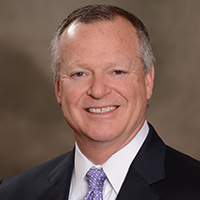Promoting a more diverse and inclusive healthcare finance workforce is everyone’s job

During the tumultuous months of 2020, it has become clear to me — as it has to many others — that disavowing racist beliefs and actions is not enough to bring about change. Making a difference requires action.
I sent a message about racial inequity to HFMA members in July and followed up in August with a Leadership column that focused on how racial disparities in business processes can exacerbate financial barriers to healthcare for patients. Another important dimension of racial equity is diversity and inclusion in the managerial workforce.
For anyone who’s familiar with the healthcare landscape, it should come as no surprise to learn that people of color are underrepresented in hospital leadership positions. A 2015 survey conducted by the American Hospital Association’s Institute for Diversity in Health Management found that 19% of lower- and mid-level hospital management positions, and just 11% of executive leadership positions, were held by people of color. At that time, people of color represented 32% of patients in respondent hospitals and an estimated 37% of the U.S. population. Although I don’t have data on healthcare finance roles, anecdotal evidence suggests that the number of such roles filled by people of color is even lower. In fact, I know of one health system that was recently trying to fill a regional CFO position with a person of color but was unsuccessful due to a shortage of qualified candidates.
Why should we, as healthcare finance leaders, do more than make a mental note of those figures before moving on to other issues requiring our immediate attention? The reality is that everyone has a role in creating a more equitable society. For those in leadership positions, that role includes addressing the racial inequities that limit people’s career opportunities and life chances. Building diverse teams better equips organizations to fulfill their missions. But most important, it’s the right thing to do.
Achieving diversity requires more than better sourcing of candidates. Why do people of color choose a healthcare finance career path less frequently than white people? Should we be looking to the pipeline to find the reasons — and to reach early careerists, colleges and universities and even high schools to generate more interest in our fascinating and rewarding profession? I believe the answer is clear.
Healthcare leaders can take many steps to help fill the pipeline and close the diversity gap. Take part in high school or college career days, or just have informal conversations about career choices with young people who may cross your path. Interview a diverse group of candidates when making hiring decisions and help ensure a welcoming work environment for people of all backgrounds. Reach out to mentor those who are starting out in their careers.
Although many diversity solutions must be implemented at organizational, policymaking or government levels, each individual can make a difference. The key is caring enough about promoting racial equity to look for and follow through on opportunities that present themselves.





